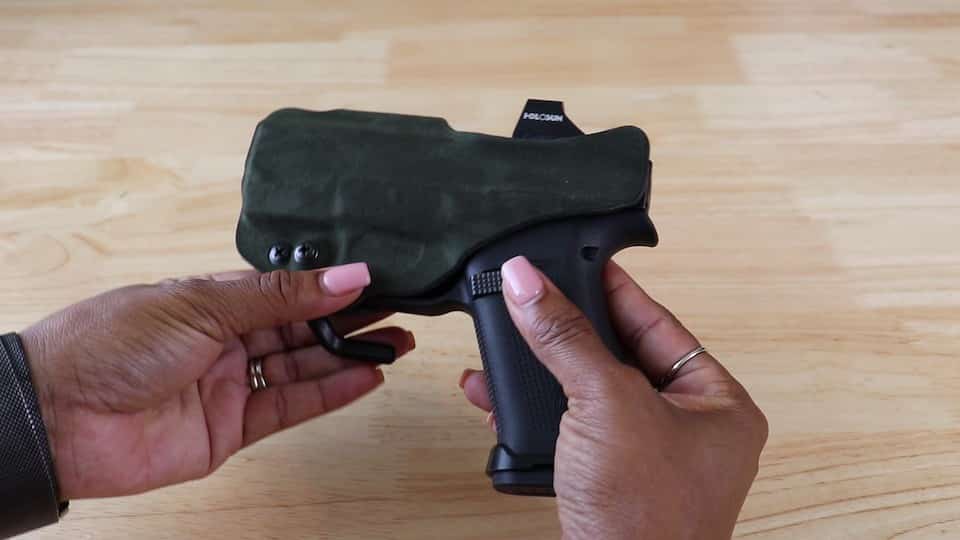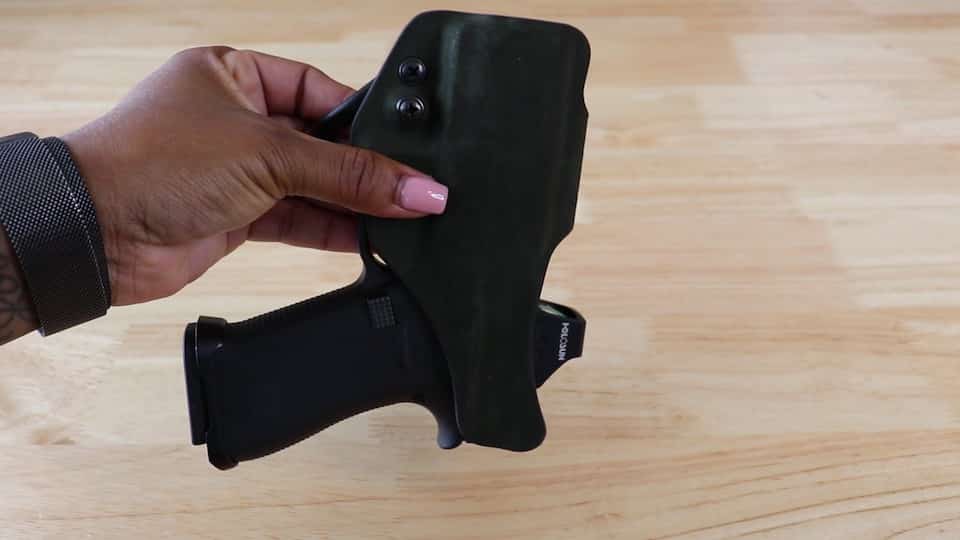Women’s Outdoor News and Avery Skipalis bring you an article sharing concealed carry tips. Starting the journey to concealed carry can be extremely overwhelming. Here we’ll share a few tips to help you along your journey, ensure you’re carrying your firearm safely and help you avoid some common pitfalls.
Sponsored by GLOCK
In past posts, I’ve covered different aspects of concealed carry. From the various methods of carrying, to different types of pistol ammunition and purchasing the correct pistol ammo, there are many things to consider when carrying a concealed firearm. I’ve even written about how to travel with your firearm: by privately-owned vehicle (or POV), on a bus or train, or even by airplane. In this installment, I’ll continue building on these past posts, and discuss the tangible goods of concealed carry.
Your personal protection journey is just that – it’s personal and should not be taken lightly. There is no one-size-fits-all solution for personal protection. Therefore, you must find ways to make concealed carry fit into your lifestyle. Because, honestly, if you had to purchase an entire wardrobe and dress in a way that you don’t like, you would probably avoid carrying a firearm or be miserable while doing so. No one wants to live like that. Trust me, I know, because I’ve been there and have the pants and shirts to prove it.
GLOCK offers many models ideal for concealed carry. The GLOCK 19, GLOCK 43, GLOCK 43X, and GLOCK 26 are popular for concealed carry among men and women. Regardless of which model firearm you select for concealed carry, you should be able to handle the firearm comfortably.

Your holster is probably one of the most-essential accessories you will own for your firearm. There are three qualities you should look for in a holster:
A popular option among many in the personal defense world is the Kydex-brand holster, due to its durability and retention. This brand boasts many options, such as inside the waistband (IWB) and outside the waistband (OWB). Depending on the clip your holster is equipped with, you may be required to wear a belt to secure the holster to your body. Most importantly, no matter what holster you choose, it should fit your firearm like a glove.

Belts are required to secure a standard hip holster to your body, and you should use a quality belt. A quality belt is necessary because it’s needed to support the additional weight of your firearm and holster. For example, if you don’t secure your holster to your body, you may find both your holster and firearm come out when you attempt to draw your gun from your holster. When you draw your firearm, your holster should stay affixed to your body, and your firearm should come out smoothly.
The way that you choose to dress says a lot about who you are as a person. Wear clothing appropriate for concealed carry, which means that it maintains your tactical advantage. Tactical advantage is kept when no one knows you’re carrying a firearm concealed. Avoid “printing,” which is when your concealed firearm creates a visible outline on your clothing. During the colder months, you may find it easier to carry concealed due to adding layers or wearing bulkier clothing. During the warmer months, you may find the task of maintaining that tactical advantage more difficult due to clothes being thinner. In this case, try layering or wearing lightweight and breathable pieces over the top of your firearm.
As previously mentioned, carrying a firearm cannot be viewed as a one-size-fits-all solution for everyone. There are multiple ways to carry a firearm. A few additional methods to carry your firearm are with concealed carry handbags, belly band holsters, fanny packs (they seem to be coming back in style) and concealment clothing with built-in holsters. The important thing is that you find the best method for concealing your firearm in a safe and comfortable way.
Once you select your ideal accessories to carry your concealed firearm, try using those items in your home while doing things such as sweeping, bending down to grab items from lower cabinets, or just relaxing on your couch. By doing a trial run, you can identify any issues in the comfort of your home, and adjust to ensure that you’re stepping out in confidence. Equipping yourself with the correct tools, and following these tips, can help you safely carry your firearm for personal protection. Now that you know a few things to consider, I wish you the best of luck in your concealed carry journey.
Avery Skipalis is the owner of Skip’s Tactical Solutions, an organization that focuses on empowering women, men and children to make sure that no one else becomes a victim. She gained her firearms experience from the military where she’s been a military firearms instructor for 10.5 years. She’s also a certified NRA rifle and pistol instructor and Glock Advanced Armorer since 2015. She’s attended Sig Sauer Academy, FNH, Special Operations Command Armorers courses as well as multiple Advanced Shooting Schools across the United States. She resides in Florida with her husband and 2 kids. She’s currently serving in the United States Air Force and loves sharing her passion with others. She thinks it’s important that women also feel like they’re in control of their own safety. View all posts by Avery Skipalis